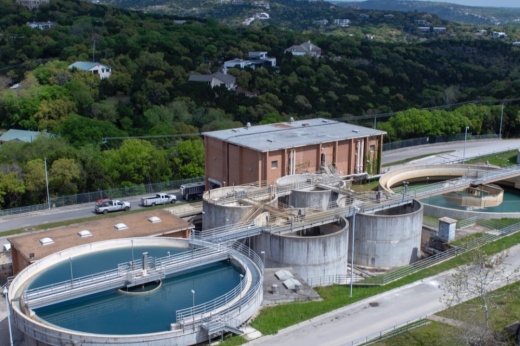“We appreciate the opportunity this review provided for us to rebuild community trust,” Austin Water Director Shay Ralls Roalson said in a statement. “We are more robust and resilient than we have ever been, but we are also facing threats that we’ve never seen in our history. Implementing the recommendations from this report will make Austin Water stronger and better positioned to face climate change and extreme weather events.”
The background
City Council directed an external evaluation of Austin Water last year in the wake of three citywide boil-water notices and a pair of localized breakdowns. The February 2022 boil-water episode led to the departure of the utility's Director Greg Meszaros; he was eventually succeeded by Roalson, formerly an AW assistant director.
The third-party audit was conducted by The University of Texas' Center for Water and the Environment for about $816,000 and publicly released in January. The review identified Austin Water as a utility with solid infrastructure that generally produces safe drinking water for the city but also has various issues in areas including staffing, management and operations.
City leaders were previously briefed on the results of the evaluation in January, and a pair of council committees received an update March 29.
“They produced a thorough, useful report that really provides a road map for us to follow as we work to improve our utility’s emergency preparedness, staffing, communications and climate resilience,” District 10 Council Member Alison Alter said of the review. “What stood out to me the most through this process is that the external review did not call for large infrastructural investments but rather for systemic improvements to management and organization. I believe that there are valuable lessons in that report for other city departments as well that are facing similar challenges.”
The UT water center's 200-page review may be viewed here.
The takeaway
Of the 53 proposals forwarded by UT in its review, AW said 14 are complete; 23 are in the works; and 12 are expected to kick off in the near future. AW did not agree with four recommendations related to management and human resources and does not plan to take them on.
AW said the remaining recommendations will be complete or implemented on an ongoing basis by the end of 2023.
During the March briefing, Roalson ran through details of several areas of focus the water utility has been working on in recent months. The UT recommendations and related AW actions cover a range of topics from hiring and retention to training and management structure, and the utility's actions so far earned a positive response from council members overseeing the process.
“You clearly are taking this review and the charge that we’ve given you as a council seriously, and demonstrated a lot of forward movement,” Alter told Roalson on March 29.
Some changes highlighted by Roalson included increased purchasing authority during emergencies—an update that helped AW's response to Winter Storm Mara in February—providing media training for public-facing staff, addressing a backlog in preventive maintenance and improving communications with operations staff.
With those in mind, Roalson and other city officials said the key issue of staffing remains a priority for Austin Water.
AW's vacancy rate now sits around 13%, she said. At the central Ullrich Water Treatment Plant, the facility that supplies the most water of the utility's major plants, one-third of positions are now vacant.
The vacancy trends are not new or unique to Austin Water, and leaders said improving staffing levels is a goal at the forefront of the utility's internal updates.
“We have this issue in a lot of different departments that we really have to continue to focus on,” interim City Manager Jesús Garza said during the briefing.
For now, Roalson said 75% of Austin Water's nearly 200 vacant positions have either been filled or posted for interested applicants. She added the utility successfully added more staff members in recent months, work that has been supported by citywide raises and incentives approved last year.
“We have a very efficient retention program, and we have one of the fastest time-to-fill rates of any city department,” Roalson said. “So recruiting is going very well and we’ve had new hires at all our water treatment plants."
Details on the status of all UT Center for Water and the Environment recommendations may be viewed below.





